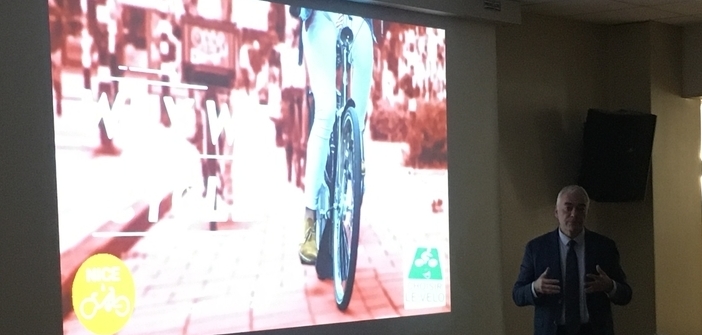Last night, the association Nice à Vélo organized a cinema debate at the association house in Nice Garibaldi. A way to promote a new, low-cost and highly ecological mobility.
Before the screening of Why we cycle? the evening’s movie that shows the daily life of cyclists in Amsterdam, the president of Nice à Vélo, Muriel Giraud, announced her plan to make Nice a cyclable city. She then handed over to her colleague from Choisir le vélo, and the two presented a rather bleak assessment of this mobility tool in France.
Indeed, the lack of bike lanes, and worse, the little coherence and connection between them, do not make the city attractive for cycling. Yet, cycling champions will be starting the Tour de France next July. “The bicycle is faster than the car in the city. The average speed of a car is 12 km/h, whereas a two-wheeler reaches 15 km/h. Moreover, it is reliable, easy to park, and good for the environment.
Its development would help to decongest city centers, but adequate facilities are needed, which is what we want for the city,” argues the president. Many development works are expected, therefore, so that Nice, like in the film shown afterward, can move towards the Danish model.
In Nice, only 75 km of bike lanes are recorded, while in Strasbourg, it reaches 600 km.
The example of Seville as an encouraging sign
The Andalusian city went from being completely uninhabitable for two-wheelers to a real haven of peace in 5 years. They went from 0.7 to 7% of bike lanes. These lanes are designed smoothly, allowing greater mobility for city dwellers. “The cost of networking the city of Seville was 32 million euros, while the metro cost 800 million. It was observed that once both means were available to citizens, we had 70,000 track users against 44,000 for the metro. When we offer the possibility of cycling, people use it,” notes Florent Morel, co-president of Choisir le vélo.
To move towards a cyclable city, the association is calling for a tenfold increase in bike lanes and a 20% budget increase. This would allow reaching the 9% of demanded bike lanes on the national plan, which is 590 km. Finally, the network must integrate the entire territory and be secure so that every inhabitant can move easily in the city.
Moreover, the azure capital offers an unparalleled climate and panorama, making it possible to combine the useful with the pleasant.


